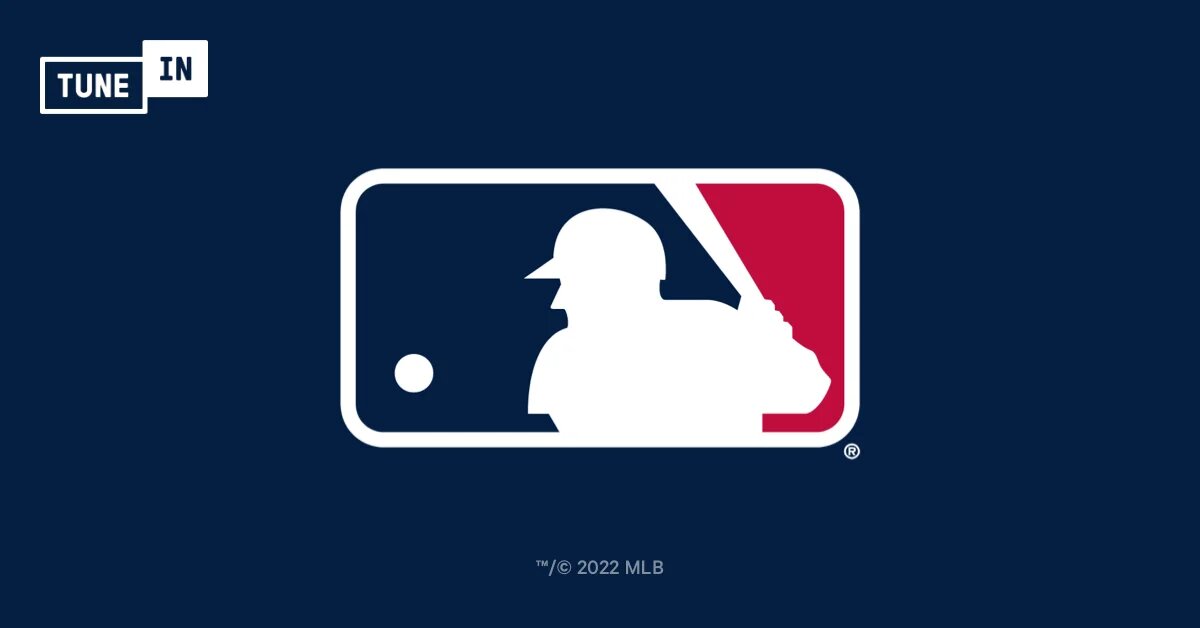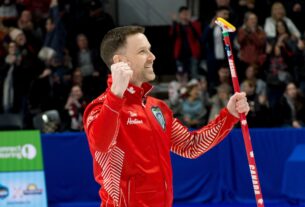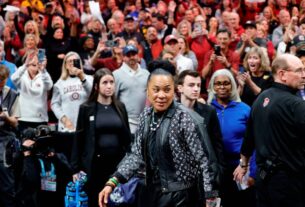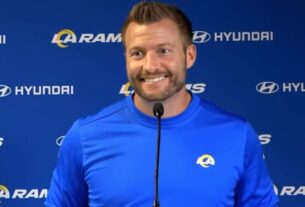This is the composition of the 12 postseason teams.
Next up are the Padres, who have only signed three homegrown players, but have matched for first place with ten free-agent signings and twelve trade acquisitions (the Dodgers have also acquired twelve players via trade). In 2024, San Diego’s trade acquisitions produced a significant lot more than Los Angeles’, accumulating 25.3 WAR as opposed to L.A.’s 16.3.
A thorough analysis of the 12 clubs’ construction leading up to the 2024 Major League Baseball postseason can be found below. A player is mentioned using the method used to acquire him if he was signed by a team and later re-signed without joining another. The order of the remaining players is determined by the date of their most recent addition to their respective squads.
The Yankees of the American League (50.0 WAR, second among 12 teams)
In-house: 7 (19.6 WAR)
• 18.3 WAR, Draft: 5
• Worldwide: 2 (1.3 WAR)
Eight free agents (or 10.7 WAR)
Eleven trades (19.7 WAR)
The Yankees have scored with first-round selections Aaron Judge (2013), Austin Wells (2020), Anthony Volpe (2019), and Clarke Schmidt (2017)—more than most playoff teams have obtained through the draft. With eleven trade acquisitions made during the postseason, New York is also tied for third place. Notable additions to the team include Jazz Chisholm, Juan Soto, and Luis Gil. The Yankees have also added several excellent free agents, such as Nestor Cortes on a Minor League contract and Gerrit Cole on a $324 million guarantee. In 2013, they selected Cortes in the 36th round, but in 2019, they sent him to the Mariners for consideration after designating him for assignment.
GUARDIANS: (10th out of 12 teams, 39.1 WAR)
In-house: 15 (25.4 WAR)
• 11th draft (13.3 WAR)
• Worldwide: 3 (9.6 WAR)
• NDFA 1 (2.5 WAR)
Three free agents (1.6 WAR).
Eight (12.1) WAR in trades
The Guardians, who rank second among postseason teams in homegrown players (15), homegrown WAR (13.3), selected players (11) and international WAR (9.6), have developed the majority of their skill internally. José Ramírez, who was signed for $50,000 in 2019 from the Dominican Republic, has emerged as the team’s face. The three best draft picks for the team were all fifth-round steals: Tanner Bibee (2021), Hunter Gaddis (2019), and rookie reliever Cade Smith (2018). The best nondrafted free agent in the playoffs is rookie reliever Cade Smith. In addition, the Guardians executed some shrewd transactions to acquire unhittable closer Andrés Giménez (from the Mets as part of the package for Francisco Lindor) and Emmanuel Clase (from the Rangers for Corey Kluber).
ASTROS, fifth out of 12 teams with 46.0 WAR
In-house: 13 (30.8 WAR)
• 16.7 WAR in the draft (9).
• Worldwide: 4 (14.1 WAR)
Fifth free agent: 3.1 WAR
Six trades (11.0 WAR)
Two waivers (1.1 WAR).
Over the last seven years, the Astros have advanced to the ALCS and won two World Series titles in addition to four pennants. Their success is mostly the result of acquiring and nurturing talent; no playoff team has a higher homegrown WAR than the 30.8 they have. With two of the first five picks in 2015, they selected Kyle Tucker and Alex Bregman. Later in the draft, they also selected Jeremy Peña (third, 2018) and Hunter Brown (fifth, 2019). Houston, which signed Ronel Blanco ($5,000), Framber Valdez ($10,000), and Jose Altuve ($15,000), is the team that finds the most overseas deals. However, they also acquired Yainer Diaz from the Guardians in exchange for Myles Straw, while the Astros’ finest player, Jordan Alvarez from the Dodgers, was acquired in a one-sided transaction.
ORIOLES: (9th out of 12 teams, 40.9 WAR)
In-house: 9 (24.5 WAR)
• WAR: 24.5 Draft: 9
• Outside: 0
Two (0.3 WAR) free agents
10 trades (100.8 WAR)
Four waivers (2.4 WAR)
Rule 5: 1 (2.9 WAR)
With nine original draft picks on a playoff roster, the Orioles are tied for third place in the league (all nine of Baltimore’s homegrown players came via the Draft). With assistance from Adley Rutschman (3.4) and Colton Cowser (3.1), Gunnar Henderson (8.9) has led the O’s draftees to the highest WAR total of any team. While the 10 trade additions haven’t accounted for a large amount of productivity, it is a group headlined by Corbin Burnes (3.4), the only arm on the staff with a WAR north of 3.0. With four waiver claim acquisitions (topped by Ramón Urías and his 1.4 WAR), the Orioles have more than any other playoff team, and it seems like Anthony Santander (2.9) is the only Rule 5 pickup in the postseason.
KINGS (45.3 WAR, sixth place out of 12 teams)
In-house: 12 (24.8 WAR)
• Draft: 17.7 WAR, or 8
• Worldwide: 4 (7.1 WAR)
Six unsigned players (10.3 WAR)
Seven trades (10.4 WAR)
One waiver (-0.2 WAR)
This Royals tem, which is Kansas City’s first postseason club since the 2015 World Series champions, is no different from the best teams of the previous ten years in terms of showcasing their indigenous talent. K.C. now has one of the strongest catching tandems in the league thanks to international signings Salvador Perez and Freddy Fermin, and top 2019 Draft pick Bobby Witt Jr. has emerged as an MVP contender. Vinnie Pasquantino, who has been out due to a fractured right thumb, could potentially rejoin the lineup, which would further strengthen the indigenous players. The Royals made smart upgrades to push themselves over the line on the pitching side, acquiring Cole Ragans in a 2023 deal and possible AL Seth Lugo, the runner-up in the Cy Young award, and Michael Wacha were signed as free agents this past offseason to add to the rotation alongside Brady Singer and Alec Marsh, two earlier draft picks.
TIGERS: Rank 11th out of 12 teams with 34.5 WAR
16 (two and a half wars)
• 13 (20.3 WAR) draft
• Worldwide: 2 (0.8 WAR)
One free agent (0.9 WAR).
6 trades (6.4 WAR)
Three waivers (5.4 WAR)
In 2018, Tarik Skubal was selected in the ninth round out of Seattle University. Not only is he the best player from that Draft six years later, but he may be the best pitcher going into the postseason as well. The AL pitching Triple Crown champion is the face of Detroit is indigenous comeback into the postseason for the first time since 2014, but Riley Greene (5.4 WAR), the number one choice in 2019 overall, has maintained that title at bat. With 16 homegrown players on its postseason roster, Detroit leads the league, narrowly defeating AL Central rival Cleveland for the title. A number of current or former Top 100 prospects are on this list, including the two players mentioned above, rookie standout Colt Keith, infielder Jace Jung, and the best pitching prospect in the game right now, Jackson Jobe. The acquisition of Trey Sweeney as a prospect and his eventual promotion to the starting shortstop spot is an example of a move that elevates a team from obscurity to contention.
GLOBAL LEAGUE
DODGERS (third place out of 12 teams, 47.7 WAR)
In-house: 5 (6.4 WAR)
• 4 (5.1 WAR) draft
• Globally: 1 (1.3 WAR)
Eight (25.0 WAR) free agents
Twelve trades (16.9 WAR)
One waiver (-0.6 WAR)
Though their success was largely fuelled by their ability to sign and develop amateur talent, the Dodgers are making their 12th consecutive postseason trip. However, this team has far less homegrown flavor than past iterations. Los Angeles, which signed Freddie Freeman and Max Muncy on the open market and brought in 50/50 players Shohei Ohtani, Teoscar Hernández, and Yoshinobu Yamamoto last offseason for more than $1 billion in combined guarantees, has benefitted the most from free agents of any postseason club. The Dodgers made modest but effective trades for Miguel Rojas and Jack Flaherty in addition to acquiring Mookie Betts in a blockbuster trade. Will Smith and Gavin Lux, first-round picks in 2016; these two are their best internally developed players.
PHILLIES: First out of 12 teams with 50.1 WAR
In-house: 6 (13.8 WAR)
• 4 (10.6 WAR) draft
• Worldwide: 2 (3.2 WAR)
Ninth free agent (21.5 WAR)
Ten Trades (14.8 WAR)
One waiver (0.0 WAR)
Although the Phillies finished with the second-best record in baseball, barely ahead of the Dodgers, they led the league in WAR (50.1), narrowly defeating the Yankees. Additionally, they have output from almost every player acquisition department. Other than the Dodgers, who are led by Bryce Harper (4.8) and Zack Wheeler (6.0 WAR) at the plate, their nine free agents have produced more work (21.5 WAR) than any other team. WAR over 3.0 was achieved by two draftees: Alec Bohm (3.1) and Aaron Nola (3.5). The top two players, J.T. Realmuto (3.1) and Cristopher Sánchez (3.3), may surprise you as three of the ten players obtained through trades also scored higher than 3.0.
BREWERS: (12th out of 12 teams, with 34.4 WAR)
Produced: 5 (12.0 WAR)
• Draft: 8 (WAR = 4.2)
• Globally: 1 (3.8 WAR)
Nine (4.7 WAR) free agents
11 trades (18.0 WAR).
One waiver (-0.3 WAR)
The two standout trade additions made by Milwaukee were Willy Adames (3.1) at shortstop and star catcher William Contreras (4.9). Even Tobias Myers, a rookie who just turned 26 and has a 3.00 ERA over 138 innings as a starter, makes a good contribution. The second-largest group is made up of free agents, although they do not have many hard hitters like Blake Perkins, whose 1.9 WAR is mostly derived from his speed and defense. For a small-market team that is not renowned for making drastic moves in the free-agent market, that should not come as a major shock. Nevertheless, before making his Major League debut, Milwaukee was willing to give an eight-year, $82 million contract to preseason No. 2 overall prospect Jackson Chourio, the club’s lone international signee. The 20-year-old rookie has already paid for that faith, particularly in the second half of the season. Milwaukee’s top Draft contributor is second baseman and 2018 21st overall pick Brice Turang (4.6).
METS: (8th out of 12 teams, 41.2 WAR)
In-house: 7 (14.8 WAR)
Prototype: 5 (11.6 WAR)
• Worldwide: 2 (3.2 WAR)
Seven (12.3 WAR) free agents
Ten trades (13.6 WAR)
Two waivers (0.5 WAR).
The Mets have a well-balanced team, at least in terms of how players were acquired. Based on WAR, the trade group is the biggest and most significant, which is not surprising given that Francisco Lindor, the probable NL MVP runner-up (6.7 WAR), was acquired in a trade. In his breakout 2024 season, Mark Vientos (3.4) overshadowed Pete Alonso (2.5) and Brandon Nimmo (2.3) as the most significant previous Mets Draft selection, while David Peterson (2.9), a 2017 20th-round pick, performed admirably for New York’s rotation. Sean Manaea (3.0) and Jose Iglesias (3.0) were not thought to be major acquisitions when they were first brought in, but they performed like them. This makes it even more remarkable for the 34-year-old infielder, who last December inked a Minor League contract.
BRAVES: (7th out of 12 teams, with 44.1 WAR)
In-house: 4 (7.0 WAR)
• 2 (5.4 WAR) in draft
• Worldwide: 2 (1.6 WAR)
Eleven free agents (14.8 WAR)
11, Trades (22.3 WAR)
Even with the loss of three important homegrown players, Ronald Acuña Jr., Austin Riley, and Spencer Strider, the Braves will make the playoffs for the eighth consecutive year. Among the homegrown players still on the roster, Michael Harris II leads the way with 3.1 WAR. Although Atlanta has been actively pursuing trades, none of the transactions was more significant than the 2024 season acquisition of Chris Sale. With 6.2 WAR, he led the squad, followed by Matt Olson (3.9) and Max Fried (3.5). In addition, the Braves have added numerous free agents of all sizes and kinds. The most productive player has been Reynaldo Lopez (5.0 WAR), although Marcell Ozuna (4.4) has maintained his offensive integrity.
PADRES (fourth out of twelve teams, 47.6 WAR)
In-house: 3 (8.3 WAR)
• International: 2 (3.9 WAR) • Draft: 1 (4.4 WAR)
Ten (12.8 WAR) free agents
12, Trades (25.3 WAR)
Analyzing the numbers shows that San Diego’s reputation for dealing away homegrown prospects for more seasoned Major League players is entirely justified. On their postseason roster, the Padres list 12 players who were traded. While they own the same record as the Dodgers (25.3 WAR), they are superior to Los Angeles (16.9 WAR) among postseason teams. Dylan Cease (4.1), Michael King (4.1), and Tanner Scott (4.0) are the three four-win players San Diego acquired on the trade market alone. It is noteworthy that King, in particular, arrived when San Diego was selling (moving Juan Soto to the Yankees ahead of his free-agent year). However, when a company trades actively, the prospects it chooses to hold onto are also always noteworthy. Franchise star Fernando Tatis Jr. is one of the two foreign signees, while Jackson Merrill, a candidate for NL Rookie of the Year, is the only San Diego Draft selection on the team.



